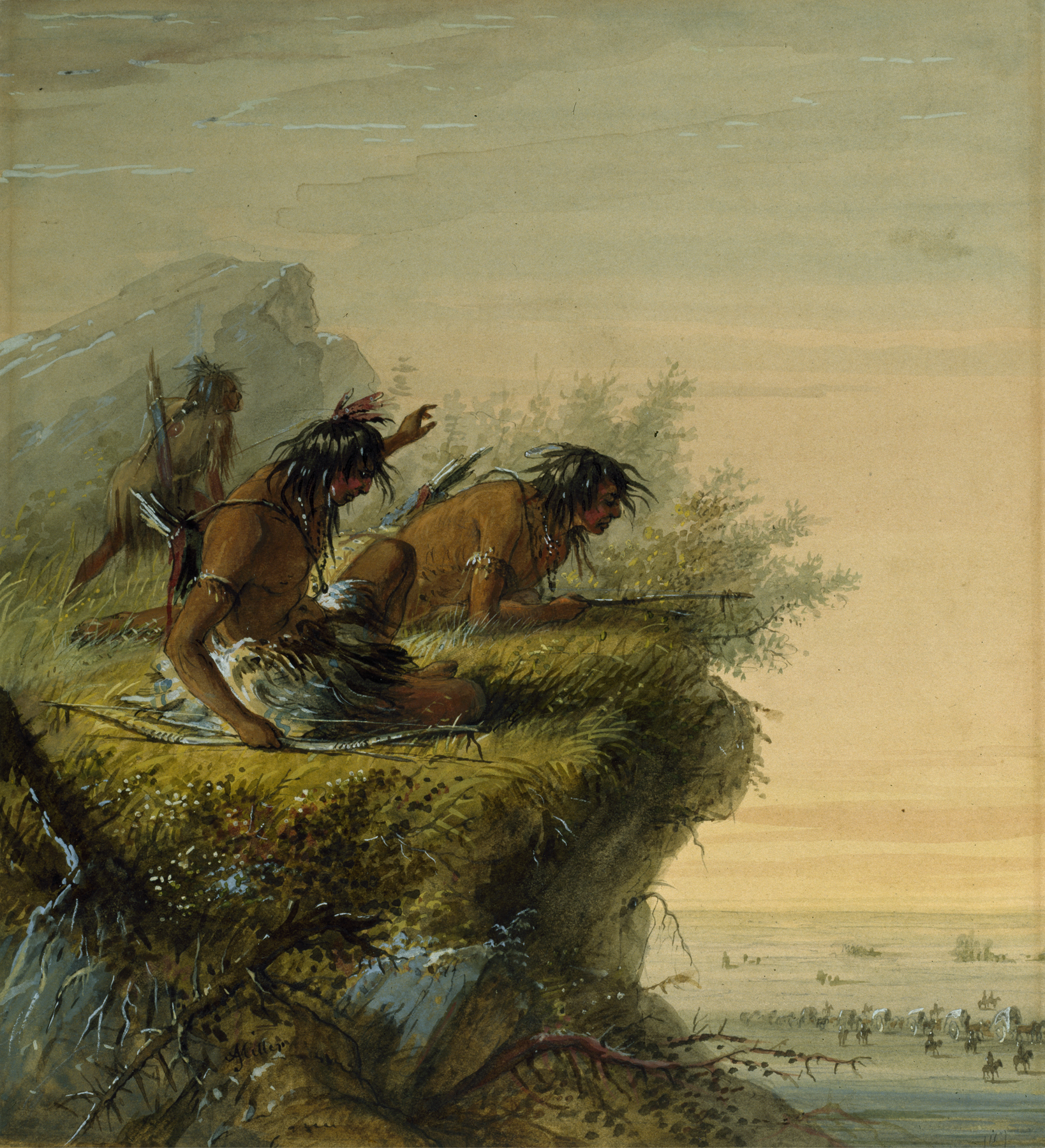Pawnee Indians Watching the Caravan
(18th and 19th Centuries )
Extracts from Alfred Jacob Miller’s original text, which accompanied his images of Native Americans, are included below for reference. These words, which shaped how Miller’s contemporaries viewed the watercolors, reveal the racism and sexism embedded in 19th-century exploration and colonization of the western part of what is today the United States.
"Of all the Indian tribes I think the Pawnee gave us the most trouble, and were (of all) to be most zealously guarded against. We knew that the Blackfeet were our deadly enemies, forwarned here was to be forearmed. Now the Pawnees pretended amity, and were a species of 'confidence Men.' They reminded us of two German students meeting for the first time, and one saying to the other, 'Let's you and I swear eternal friendship.' In passing through their country, it was most desirable and indeed essential to cultivate their good will, but these fellow had le main croche. They could not, or would not, distinguish meum & teum. Whether they were within the Camp or in our vicinity it was requisite to put a ddoulbe guard over the horses. Then when we were en route we were continually under their surveillance, and we knew it. From the tops of bluffs, behind rocks, and out of the long grass of the prairie, they watche us and kept themselves posted; transmitting no doubt intelligence to 'headquarters.'" A.J. Miller, extracted from "The West of Alfred Jacob Miller" (1837).
In July 1858 William T. Walters commissioned 200 watercolors at twelve dollars apiece from Baltimore born artist Alfred Jacob Miller. These paintings were each accompanied by a descriptive text, and were delivered in installments over the next twenty-one months and ultimately were bound in three albums. Transcriptions of field-sketches drawn during the 1837 expedition that Miller had undertaken to the annual fur-trader's rendezvous in the Green River Valley (in what is now western Wyoming), these watercolors are a unique record of the closing years of the western fur trade.
Inscription
Provenance
Provenance (from the French provenir, 'to come from/forth') is the chronology of the ownership, custody, or location of a historical object. Learn more about provenance at the Walters.
William T. Walters, Baltimore, 1858-1860, by commission; Henry Walters, Baltimore, 1894, by inheritance; Walters Art Museum, 1931, by bequest.
Exhibitions
| 2006 | Alfred Jacob Miller and the Western Indians. The Walters Art Museum, Baltimore. |
Geographies
USA (Place of Origin)
Measurements
H: 10 7/16 x W: 9 7/16 in. (26.5 x 24 cm)
Credit Line
Commissioned by William T. Walters, 1858-1860
Location in Museum
Not on view
Accession Number
In libraries, galleries, museums, and archives, an accession number is a unique identifier assigned to each object in the collection.
In libraries, galleries, museums, and archives, an accession number is a unique identifier assigned to each object in the collection.
37.1940.44



